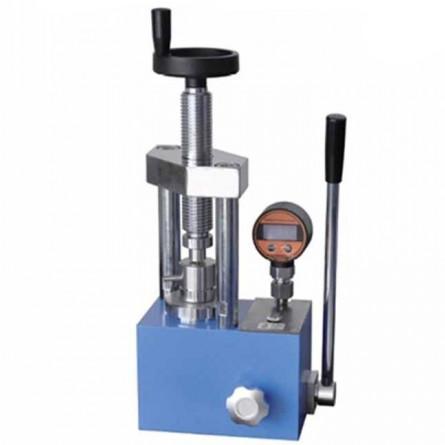An automatic hydraulic press is a sophisticated machine designed to apply substantial force to materials or components in an automated manner, ensuring precision, repeatability, and efficiency in various manufacturing processes. These presses are widely used across industries such as automotive, aerospace, electronics, metalworking, and plastics for tasks including forming, molding, punching, assembly, and quality testing. The automation aspect of these machines allows for high throughput, consistent quality, and reduced labor costs.
Key Features of an Automatic Hydraulic Press
1. Automation and Control
- Programmable Logic Controller (PLC): Equipped with a PLC that enables precise control over the entire pressing cycle, from loading and positioning the material to applying pressure and unloading the finished part.
- Touchscreen Interface: User-friendly interface for setting parameters, monitoring the process, and diagnosing issues. Operators can easily program different sequences for various applications.
- Recipe Management: Stores multiple recipes or programs for different parts, allowing quick changeovers between jobs without manual reconfiguration.
2. Precision Engineering
- Accurate Force Application: Capable of applying exact amounts of force required for specific operations, ensuring consistency and quality of the end product.
- Positioning Accuracy: High precision in the positioning of the ram or platen, which is crucial for repeatable results especially in delicate operations like electronic component assembly.
3. Safety Features
- Integrated Safety Systems: Includes safety interlocks, emergency stop buttons, light curtains, and other protective measures to safeguard operators.
- Pressure Relief Valves: Prevents overloading by releasing excess pressure, protecting both the equipment and the operator.
4. Versatility
- Customizable Tooling: Compatible with a wide range of dies, molds, and fixtures, making it adaptable to various tasks and production requirements.
- Multiple Operations: Can be configured for different processes such as stamping, bending, embossing, crimping, and more, depending on the tooling and setup.
5. Efficiency and Productivity
- High Speed and Throughput: Automated systems can operate at high speeds with minimal downtime, significantly increasing production rates compared to manual presses.
- Energy Efficiency: Modern designs incorporate energy-saving features, such as regenerative drives that recover energy during the decompression phase.
6. Data Collection and Analysis
- Real-Time Monitoring: Sensors and software provide real-time data on critical parameters like force, displacement, temperature, and cycle time, allowing for immediate adjustments if necessary.
- Quality Assurance: Data logging capabilities enable detailed tracking of each operation, supporting quality control efforts and compliance with industry standards.
7. Integration with Other Systems
- Factory Automation: Easily integrates with other machinery and systems within a production line, supporting lean manufacturing principles and Industry 4.0 initiatives.
- Robotics: Can be paired with robotic arms for fully automated loading and unloading, further reducing human intervention and enhancing productivity.
Manual Hydraulic Press
Applications
- Metal Forming: For operations like deep drawing, blanking, coining, and embossing of metals.
- Plastics Processing: Used in compression molding, injection molding, and thermoset molding of plastic parts.
- Assembly Operations: Ideal for tasks requiring precise force application, such as crimping electrical connectors, riveting, or inserting components.
- Quality Testing: Performs tests like crush resistance, tensile strength, and fatigue testing on materials and components.
- Composite Manufacturing: Utilized in the fabrication of composite materials through processes like resin transfer molding (RTM) and hot pressing.
Choosing the Right Automatic Hydraulic Press
When selecting an automatic hydraulic press, consider factors such as the required force capacity, precision needed for your applications, available space in your facility, intended use (production vs. laboratory), and any specific features relevant to your industry. Investing in an automatic hydraulic press tailored to your needs can greatly enhance operational efficiency, product quality, and overall competitiveness in your market.

